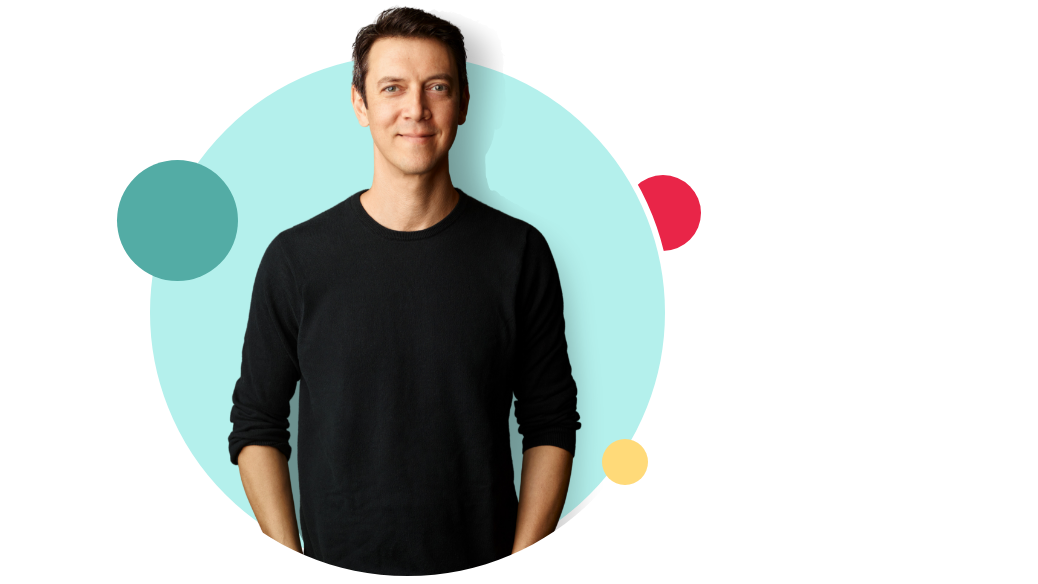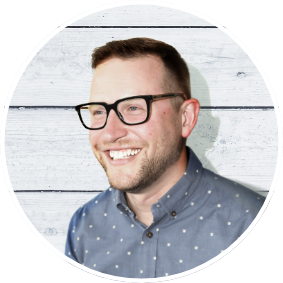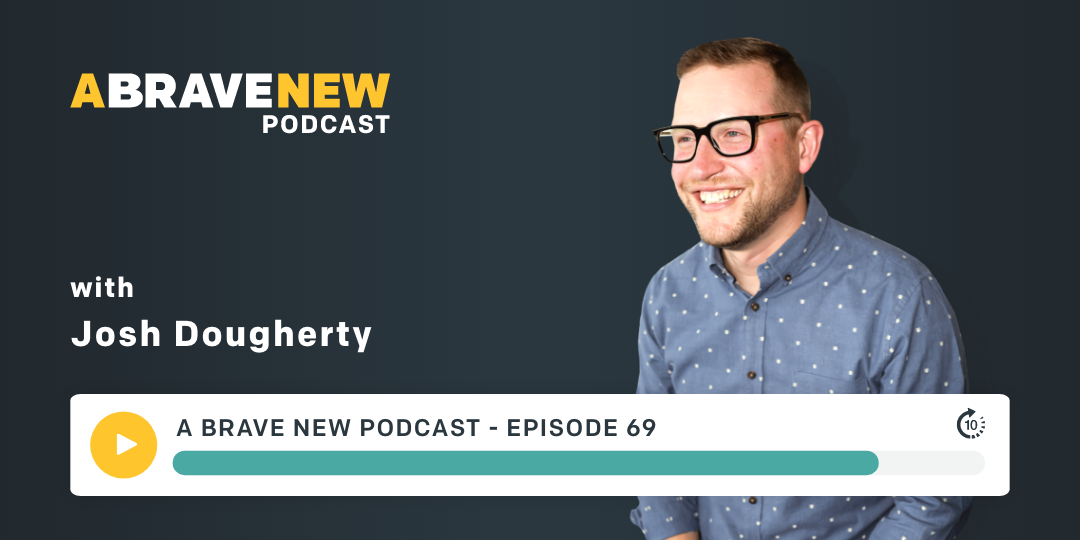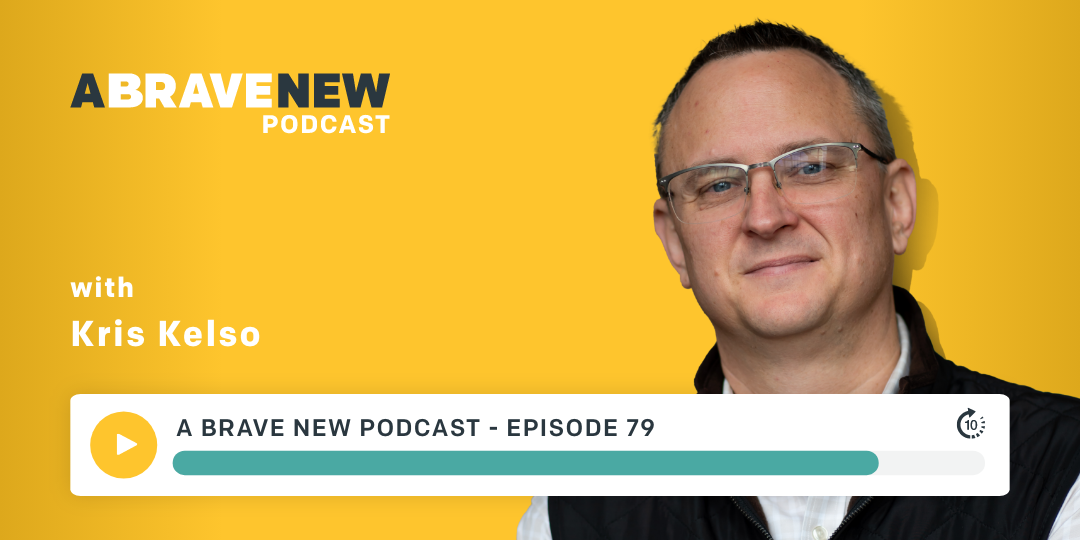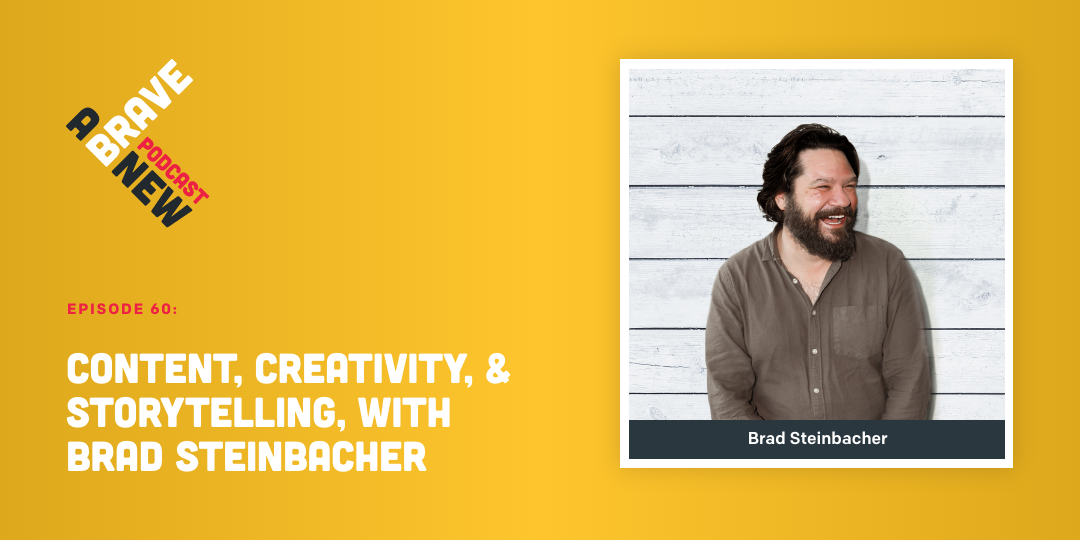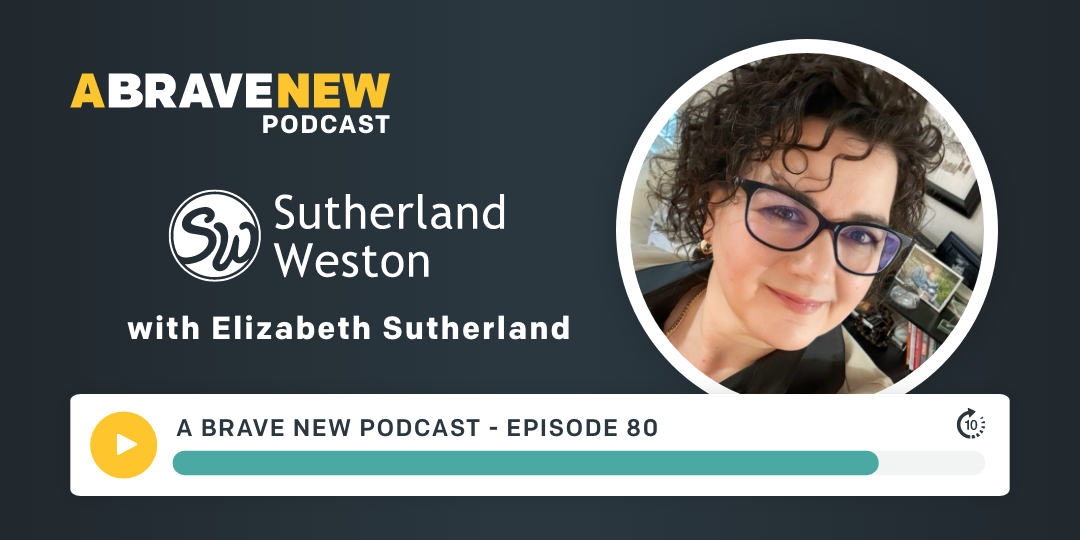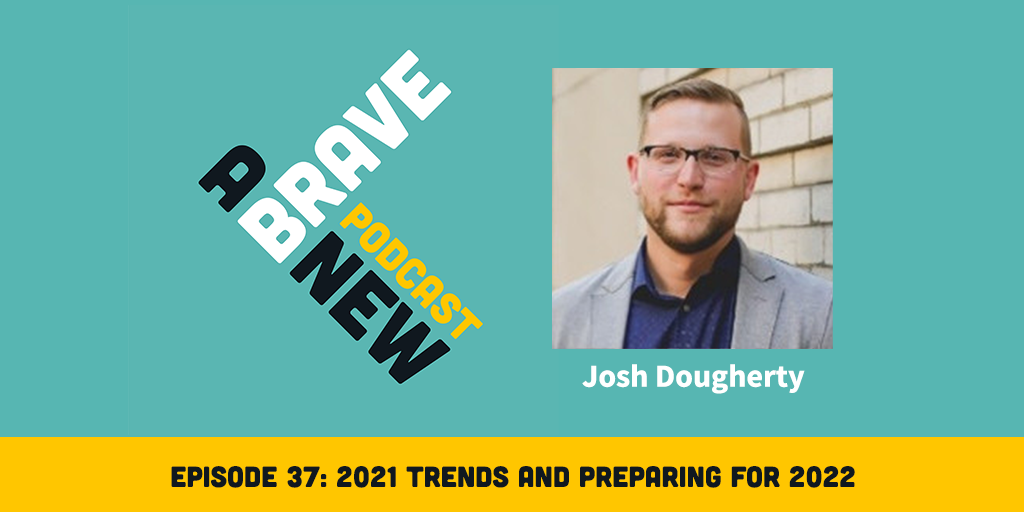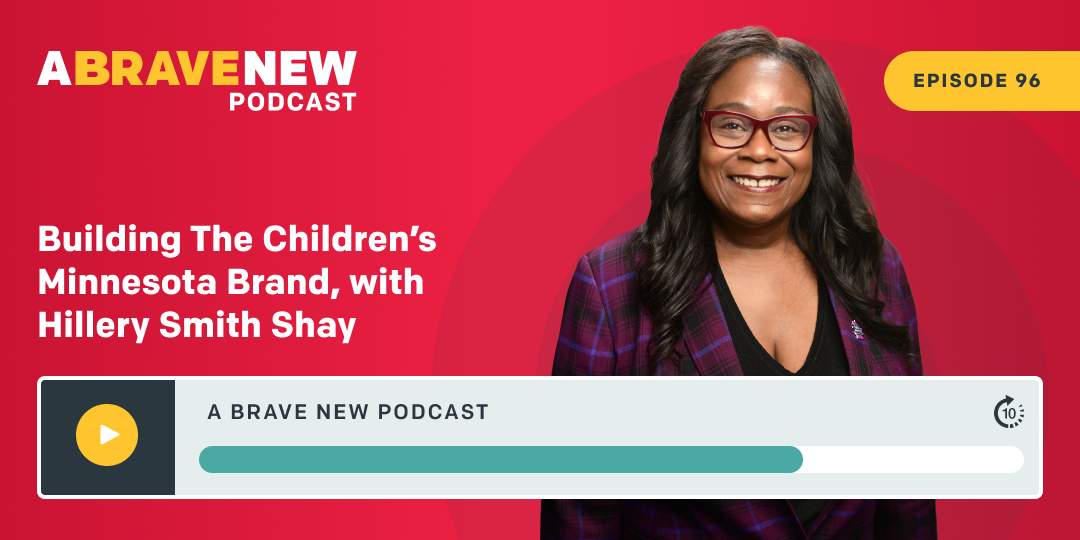Rob works with business leaders to build identities for their organizations, products, and services. More than a name or logo, Rob believes an identity is defined by clear, focused beliefs, expressed through compelling words, and substantiated by consistent actions. His specialties include strategic positioning, naming and messaging, brand architecture, qualitative research, and organizational change. Prior to launching Heirloom, he was global head of brand architecture and naming at HP, and previously held strategy director roles at several leading, international brand consulting firms.
Rob is the author of Brand Naming: The Complete Guide to Creating a Name for your Company, Product, or Service, the most complete and detailed book about brand naming. He has also written about brand strategy and naming for leading publications such as Harvard Business Review, AMA.org, Entrepreneur, TechCrunch, Business Insider, The Guardian, and VentureBeat. Rob also hosts How Brands Are Built, a popular branding podcast and blog.
What you’ll learn about in this episode:
- What it was like for Rob to work alongside the legendary Alina Wheeler co-authoring the 6th edition of Designing Brand Identity.
- Both Josh and Rob’s reflections on the impact that Alina Wheeler had on the brand and design communities in her lifetime
- What you can expect from the latest edition - what content has been updated and what content is new
- A few of the new case studies that Rob is excited to feature in the new edition (all 50 case studies are brand new)
- An inside look at the all the work that went into producing the latest edition
- The pros and cons of generative AI in the branding discipline
- Rob’s advice for anyone diving into the branding process for their company in 2024
- When you’ll be able to pick up your copy of the 6th Edition of Designing Brand Identity
Additional resources:
- Designing Brand Identity Site
- Rob Meyerson’s Site
- Heirloom Agency Site
- Rob Meyerson on LinkedIn
- Josh Dougherty on LinkedIn
- Josh Dougherty's Site
- A Brave New’s Website
Transcript:
Josh Dougherty:
Welcome to A Brave New Podcast. This is a show about branding and marketing, but more than that, it's an exploration of what it takes to create brands that will be remembered and how marketing can be a catalyst for those brands’ success. I'm Josh Dougherty, your host. Let's dive in.
Thanks again for joining me on the episode today. This episode is going to be focused on talking about a book that's coming out. You probably, if you've been in the branding space for any amount of time or if you've worked in marketing, you may have heard of it. It's called Designing Brand Identity. The sixth edition is coming out shortly, and we have the privilege of talking to one of the co-authors, Rob Meyerson, here today. You may know Rob from his work with Heirloom, his brand consultancy, and for his podcast, How Brands Are Built. He really has a wealth of knowledge, especially in the naming space, in the brand strategy space, in the brand architecture space. So it's going to be, I think, a rich conversation to really explore this new book, this new edition of this seminal book in the branding space that's coming out. And also to just talk a little bit about branding in depth. So, I hope you enjoy the conversation. Let's dive in.
Thanks so much for coming on today, Rob, I really appreciate you joining the show.
Rob Meyerson:
It's my pleasure. Thanks for having me.
Josh Dougherty:
Awesome. So, I know you've been an important voice in the branding space for a number of years through your podcast, How Brands Are Built, through your book on brand naming, and obviously your work that you do with clients. So all around, in addition to things you've contributed on articles, et cetera, I'd love to hear a bit more on what you're focusing on today. What's going on with you now?
Rob Meyerson:
Yeah, thanks. Thanks for saying that. My day job is running Heirloom, the full service independent brand consultancy that I founded about eight years ago. And so, the majority of my time is working with clients that range from a lot of, as you'd expect, given that I'm in the Bay Area, a lot of big B2B tech companies. Prior to this, I was working at HP, so a lot of my contacts in the industry come from either HP or they've gone on to other similar companies. But I also work with mid-size companies and startups all the time in all different industries all across the country and occasionally outside of the U.S. So that's mostly what I work on. But I do also, as you said, I run a blog and a podcast, How Brands Are Built, and as I'm sure we'll talk about, I work on books occasionally too. So, I wrote Brand Naming, it came out two years ago, and I've been hard at work on Designing Brand Identity.
Josh Dougherty:
Yeah, which I think is the main focus of our conversation today. Obviously, an impending launch is coming up pretty shortly after this podcast will air, so that's our main focus. And you obviously co-authored that with Alina Wheeler, who's been managing that book since, I don't know, I think 2002 was maybe the first release.
Rob Meyerson:
Yep.
Josh Dougherty:
Yep. So, I know this is a little bit of a bittersweet conversation. Obviously we're promoting the book, but, over the last month, Alina passed away. And so we're also, I think as a branding community, obviously mourning the loss of someone who was a giant in this space and who did a ton of work. I obviously didn't know her personally like you did working together, but I can attest to the fact that she had a big impact on many of the people I've worked with in my branding career. The book that she worked on has been a constant reference guide throughout my career to look back at and dig deeper into concepts, see great work, and her loss is really huge for our community. She leaves a big legacy. I wanted to give you a chance to share any thoughts you have about her and what your experience was knowing her.
Rob Meyerson:
Yeah, she passed away last month. You used the word impact, and that's a great word for Alina. She made a huge impact in everything that she did, but not the least of which is 20 years of Designing Brand Identity. You said she had managed the last five editions. She created what is really more than a book at this point, but has become somewhat of a community and a concept that is bigger than just the book, and she revised it on her own. She has a team, which I want to talk to you about the team a little bit, but she was the sole author for the next four revisions and additions as well. So just a huge quantity of work and a huge impact that she made.
And as you'd expect, or as you may know from having heard her talk or having had conversations, she's brilliant. She was groundbreaking in this book and other things that she did, I think a real visionary in just coming up with the idea for a book like this. And she said she wrote it because it was the book she wanted on her shelf, and so, literally, envisioned something and made it real. But along with that hard charging ambitious side of her, she in person was funny, kind, incredibly generous with her time. And I don't have the luxury of having known her for decades either, so I don't know how much of this is what she was always like, but when I knew her, just so willing to give time and expertise, so interested in what other people were working on and how she could help.
And also just as a creative person. Conversations with her, you felt like you were in a pinball machine. She'd bounce you all over the place with one idea and then another idea, big things, small things. And yet, somehow, with that kind of mind, she was able to harness it and channel it all into something really, really useful. And if you've looked at the book, it's incredibly well organized and detailed. And so I think the fact that all those dimensions could exist in one person, it's pretty amazing. And we're lucky to have had her and to be able to continue to benefit from her mind, as it's documented in these books. And yeah, we'll miss her greatly on a personal level and a professional level.
Josh Dougherty:
Yeah, for sure. I think the generosity that you spoke about really rings true. I'd heard her speak, I followed the, I don't know, I think it's more of an industry reference guide even more than a book of ... You use the word community, you see the generosity of it, this is the book you want on your shelf, all those in-depth case studies that people are willing to share because of the relationships she had. To be able to say, "Oh, I was wondering how that brand was built. I'd love to be able to see what that looks like." And here you can open this book and find an actual piece about that. So, huge loss, but a huge legacy.
Rob Meyerson:
Absolutely.
Josh Dougherty:
And I don't know how you segue from this, but hopefully we can honor her in the conversation around what's happening with this new edition that she put time and effort into with you to really move that conversation forward. And she won't be forgotten because of that legacy she's left with us in our industry.
Rob Meyerson:
Yeah, and she is very much a part of this sixth edition. I can't imagine this book not benefiting from her thought process. Even just the structure of the book is Alina's. This is her creation and I've been lucky enough to work on it and potentially steward it even further into the future. But yeah, the new edition is due out soon. And you said bittersweet. I'm happy that she got to see it. She turned in the final pages along with us to the publisher and had input on every single one of those pages, but very sad that she won't be able to hold it in her hands once it's actually produced and distributed later this month.
Josh Dougherty:
Totally. Well, I think it's a good segue to talk about, you said obviously she did the last five editions, she invited you into work on the sixth edition. Can you share a little bit about what your reaction was, that story about becoming a co-author in this sixth edition?
Rob Meyerson:
Yeah, I was surprised, in some ways honored definitely. I think more than anything else, just to be asked. But believe it or not, it wasn't at all an immediate, "Yes." I knew it was a great honor, but I also knew that it would just be a monstrous undertaking. And Alina made that really clear to me too, that this was going to be a daunting challenge. And like I said at the beginning, I have my own business to run, I have clients that I need to attend to, not to mention two young kids and everything else. So, I deliberated. I talked to my wife about whether it was a good idea. And in the end, I was just too excited about the opportunity to work with Alina, to learn from her directly, to meet branding professionals all over the world and experts, and dig into areas of expertise that I don't have. And as we've been talking about, to continue this work that's really become important to the industry.
Josh Dougherty:
Yeah, awesome. Before we go on further, when is the official release date for the book? What are some highlights from the latest edition that you'd point out to people?
Rob Meyerson:
So the tentative publication date has always been January 24th, which is creeping up on us very quickly here. That could shift a week or two I think honestly in either direction. We're done. It's handed over to the publisher, it's gone to press. I think, as I understand, it's mostly a question of how quickly they can print and ship things at this point. And so it should be around the end of the month.
Josh Dougherty:
Awesome.
Rob Meyerson:
And then, yeah, what's new in the book? It's been updated throughout. Every single page has been considered, most of them touched in some way big or small, and the goal really is to make it more accurate, more relevant for today's branding professionals and students. So, like previous editions, it's over a hundred different branding subjects from culture to social media, positioning, brand guidelines. There's some new content stuff around AI, VR and AR, social justice, which has been touched on in previous editions, but given everything that's happened since the last edition around Black Lives Matter, and even the Me Too movement and everything, it felt like there was more to say there.
And then some things that are maybe less culturally relevant, but just more marketing specific: iconography has its own spread now, evidence-based marketing, the work out of the Ehrenberg-Bass Institute, and books like How Brands Grow, I think, needed to be addressed directly. And highlights, it's got 800 images, diagrams, examples of brand touchpoints. That's more than the last edition and 75% of those are new. 400 quotes from branding experts, over half of those are new. And then we'll talk more about this, but each edition has case studies at the back, about 50, and one of the things I thought was most important in updating the book was to make sure all of those were new. And so it's got over 50 brand new case studies, because if you own the fourth or fifth edition, I wanted to make sure that if you bought the sixth, you got a full refresh on those case studies. So, now you have a hundred plus between those different additions.
Josh Dougherty:
Totally, totally. So, that's a massive amount of work. You talk about 75% of 800 diagrams, graphics new. Maybe this is a good time to talk about the team that's working on the book along with you, the two authors. What did that look like?
Rob Meyerson:
Yeah, so it wasn't just me and Alina, luckily. The first person I want to mention is Robin Goffman, who is a creative director for the book. She first got involved with the fifth edition while she was still a design student in the Philadelphia area and was brought on board by a teacher of hers, Kathy Mueller, who also worked on at least the fourth and fifth editions, I think maybe the third as well. And Robin and Kathy have been involved in terms of just designing the interior of the book, how each spread, with a grid system for each page, the typography hierarchy. And so both that system and then on a page-by-page basis actually implementing it, helping select images in some cases, lay things out. And really just helping me think through, as I brought in content or as Alina brought in new content or revised content, how's this all going to look in the book.
So, I'm lucky in multiple ways. One, really you need a team. I'm not a designer, and so it wouldn't look good if I did it, and it does look good luckily. That's a big hallmark I think of Designing Brand Identity, but also that continuity, because I'm so new to this, it was great for me to be able to lean on Robin in some cases in terms of; "Well, what did we do on the last edition?" Or, "How was this handled?" Because it's not just the look of the book, but also the process that's used. And Robin especially has been so in the weeds on this with me of emailing people and trying to get higher resolution images and getting permissions to use images, and then having the broader team, which includes Kathy and others, to again just get some more history on things, because so much of this is, there's that legacy of the book, and we want to make sure that we're moving it forward and that we're doing it in a way that honors what has been done in the past.
Josh Dougherty:
Totally. Yeah, massive undertaking. And I think that's, having been in creative disciplines for a long time as well, those little things of getting the right images, all that sort of stuff, you never realize how much work that's going to be until you're in the midst of it.
Rob Meyerson:
Yeah, I was going through old emails from Alina, and I found one where she did say that getting the permissions is the worst part or something like that. It's like one of those many things that she said to me, and I probably forgot until it was time to really knuckle down on that part of the work, and I realized, "Oh my God, this is ..." It's a headache. Going back to people that have said yes over the phone or email, but you need a signed document in a lot of cases. So, yeah, it's a challenge.
The other part of the team, if I use that word a little more loosely is, and we can get to this, but there are so many pages in the book, like I said, where I'm not a subject matter expert. Intellectual property, for example, I deal with it all the time as a namer, but I'm not a lawyer. I don't know the case law or the up-to-the-minute changes there. And so of course for things like that, we're reaching out to experts just on a really page-by ... "Can you just look at these two pages and let me know if you think this should be updated and how so?" And then collaborating with that person to do that. And so, there are dozens of other people that have touched this and all of them are thanked in the front of the book, and that's the broader team.
Josh Dougherty:
Yeah. That segues well into my next question, because something that stood out to me in the Q&A that you shared with me from the front of the book where both you and Alina are sharing your thoughts on the new edition was how she really gave you a masterclass in collaboration. Obviously, if you've been working in brand consulting, brand work, you know how to collaborate, it's part of our day-to-day work, but she's been doing it for a long time. I'd love to hear maybe a few of the things that you learned from her through that process that you're taking forward into collaborations of any kind in the future.
Rob Meyerson:
Yeah, I think a lot of it comes back to Alina's personality and her strengths that we talked about at the top of the call. But, even knowing her and knowing what a huge impact she's had, it was still surprising to me the number of people that I called to ask for help, those experts that I just mentioned, and how many of them would just say, "Anything for Alina. Absolutely. If it's helpful to Alina in any way, let me know." And the way people just jumped on that, and I think, again, it comes down to who she is, the kindness that we talked about, the generosity. She really is able to slow down and take a genuine interest in people. It is not just transactional work for her. She's really fascinated by, I think people in general, but certainly people that do what we do and investing in them a little bit. And I witnessed that firsthand, and I heard a lot of stories from people saying, "I've known Alina for 30 years and you wouldn't believe what she did for me back 20 years ago." So, yes, a masterclass I think in collaboration, but really it just feels like a better way to live, really taking joy in these conversations. And it's something that I hope I can try to bring into my life and my work and try to live up to that example that she set.
Josh Dougherty:
Yeah, I love the concept; a better way to live, because I think this is something I'm always struggling with. I would say necessarily struggling with, thinking about too, of how do you live authentically through both your work and your personal? And the generosity should be through everything, because it just is a more fulfilling way to show up in the world across the board.
Rob Meyerson:
Yeah, for Alina, this book was such a big part of her life, and so a lot of things she did are through the lens of the book. But the book itself is a gift to the branding community in a lot of ways. And that collaborative spirit, just the way that she was able to work with people and have it not only feel but really be mutually beneficial was inspiring.
Josh Dougherty:
Yeah, absolutely. So you dive in, you start tackling a project like this. You talked a little bit about all the changes that you've made, and obviously there's intentionality in each page, but what does the process look like to even start identifying where we're going to do major overhauls?
Rob Meyerson:
Yeah, it's really easy to get overwhelmed when you start looking at this book. And just to tell you a story that gives a window into that, I immediately bought, I don't know, half a dozen copies of the book and sent them to friends of mine who I really, really respect in the branding world, people that have been mentors to me and said, "Look, I've got this opportunity to work with Alina. I'd love your perspective." Just a lot of them have the book already, but maybe not the fifth edition. And so I said, "Just take a look at this. Take a really macro view. What's wrong with this book? What is missing, because it's too new to have been in the fifth edition? Where do things confuse you in terms of the order or the structure of the book?" These big questions like that. I don't believe I heard a peep back from anybody.
When I called them and said, "Hey, did you get the book?" A lot of them, everybody was eager to help, but a lot of them, I think it was just like, "Man, there's so much in here." It's easier to start on a micro level and say, "Well, here's one thing I would change on this page." And so I ended up having to take a two-pronged approach where I would pick off specific pages that I knew needed to be updated, while also trying to take that step back of, what's happening in the world? What's happened since the previous edition? And I think only in that way of switching back and forth between those two modes was I able to get the ball rolling. But other than that, leaning on other members of the team, Alina and I both had lots of ideas before we even ... We had to reach out to the publisher before we even signed a contract to do the sixth edition and tell them what some of our ideas were for changing it, so those were a lot of those big ideas. And then once you get into it, it's spreadsheets, man. It's project-
Josh Dougherty:
Exactly.
Rob Meyerson:
It's like for each spread, what's the status? Who am I going to reach out to? When are we going to hear back? What images do we need? And it just becomes, and again, that's where you need a team, because I'm a little ... Alina's, like I said, pinball, bouncing all over the place. I'm a little more organized in the way that I work, but it's still not my forte, so definitely needed help just shepherding every spread and case study through the process too.
Josh Dougherty:
Totally. Totally. Yeah, and I think that's interesting when you talk about going from micro to macro, because I think that's what happens often when you're working on building out a new brand strategy or something. You have to do that same process. There is not a linear approach to creativity, so it's fascinating to hear that same approach.
Rob Meyerson:
It's a great point. Working on brand strategy, I feel like sometimes you find one little hook of this is what we need to change to turn our brand around, and then you have to extrapolate that into okay, but what's the bigger idea that sits above that? And that can make that feel like not just some tiny, tiny thing. And then sometimes you have that gestalt, like, "This is where we need to head, but how do we actually make that real on a granular level?" And so yeah, oftentimes I guess both are the answer.
Josh Dougherty:
Yeah, for sure. So if we think about the areas that you've worked in a lot, brand strategy, brand architecture, naming, how were you able to add maybe additional depth and rigor to those sections of the book where it's in the core discipline that you work in every day and you have a ton of experience in?
Rob Meyerson:
Yeah. In some ways, those were the easy sprints to start on. Talking about micro, it was easy to go to these two pages I know. And let's take naming specifically, since I wrote a whole book on that, it was pretty easy for me to just look at it and say, "Okay, here are the three things that I think we should add to this page." And almost just summarizing my book or taking some of the most important things from my book and getting them onto the page. And I know plenty of people who do naming work, and so in terms of finding other people that we might want to quote, that was also low hanging fruit. Similar for strategy and architecture. For strategy, I knew I wanted some of David Aaker's work on the page and so did Alina. That was on her list of things to do. Mark Ritson, I wanted to quote or put some of his thinking on that page.
For brand architecture, sometimes it is these little things. The previous edition did not use the terms branded house or house of brands, and I think there's been somewhat of an evolution where those terms were always used colloquially between brand strategists, but maybe didn't feel like the academic terms, which is fine. But I just feel like they're so commonly used at this point, it would be missing. I wouldn't want a student to take a class and think that they had learned brand architecture and then not have heard branded house and house of brands. So including that, and adding some of those diagrams that we typically see, those are some places where I just felt like I could step in and knew what needed to be added. Other places were harder.
Josh Dougherty:
I think that addition of those two architecture terms is really helpful because that's how clients are often, in my consultancy, that's what they're talking about. So it doesn't really matter at the end of the day, that's how they're ... They're still experts in some ways but a little bit less of an academic approach.
Rob Meyerson:
Right. Right. Yeah, I think we need to be both teaching best practices and reflecting the reality of what's out there. Also, this book, it's for students, but it's also for branding professionals of varying degrees of experience. And so, we want it to be reflective of their work and their experience. And then other things on those pages, but elsewhere, it's just everywhere: better examples, newer examples, more examples of, "What do you mean by branded house? Can we list a few more? Can we delete some from the fifth edition that have gone out of business or that just aren't as relevant anymore and put in something that's a little fresher?"
Josh Dougherty:
Yeah, I think that's especially helpful for students, because again, you're learning big concepts and then to see how things don't always fall very cleanly into those big concepts, and there's variations all over, in any area.
Rob Meyerson:
Yeah, absolutely.
Josh Dougherty:
Well, I'd love to dive a little bit into talking about one trend that you specifically mentioned earlier. You've added in information about AI. Obviously, everyone's talking about generative AI, et cetera. What are some of the applications that you discuss in the book? What are the challenges that you're thinking about? Let's talk about the book, but let's also talk just generally from a brand perspective, what are those challenges you're thinking about going forward as we're building brands in the age of generative AI?
Rob Meyerson:
Yeah, I'll start with the book and then we can expand beyond that. But every topic in this book, just part of how it's structured, gets a two-page spread. And so, AI has one now of its own. It's hard to discuss AI in a book, especially right now with how rapidly it's changing and you're putting these words down on paper. Even between first writing it and then getting to the publication date, things have changed, and we're hoping this book will be relevant on the shelf for years. But we can talk about pros and cons, and this is where we can expand on some of these. But I think the tone of the book is often somewhat optimistic and looking at more the pros than the cons.
We definitely talk about, within our jobs as branding professionals, there's, I think, huge potential for increase in efficiency, brand creation, brand management. There are ways we can use it for brainstorming, creating more interesting brand experiences or more personalized brand experiences. Text and image generation is going to be helping with ideation, content creation, design, and product prototyping. One of the agencies I talked to about product design showed me that they're already using, I think it was, DALL·E or maybe Midjourney, to help them come up with product prototypes, copywriting of course. We can have a love-hate relationship with it, but I think we can just recognize that it's got the potential to make us more efficient, productive. But of course, there are risks, and I included a quote on the page from Stephen Hawking, which is obviously a little old, but it's that, "I fear that AI may replace humans altogether." So that's the worst case scenario.
So we talk a little bit about the pros and cons, and then the other thing that we did that I think makes a lot of sense is we wanted to get an example on here. And so we took some work from &Walsh, which is Jessica Walsh's agency. And what I love about it is that even when somebody looks at this book 10 years from now, that work will stand as an early example of a branding agency using AI in their work. And so, they did work for a nuclear energy advocate, an online influencer, and they wanted the imagery to look otherworldly and spacey. And so they used DALL·E to help them create these images, and they're pretty out there looking. It's very sci-fi, and Jessica Walsh said that she felt like using AI for a project aimed towards protecting the future of humanity made sense, going back to that Stephen Hawking quote. There's a great quote from another person from her agency just talking about how AI has the potential to take some of the grunt work out of design and free designers up to do the fun part of design.
And so, on these two pages, you get some high-level, definitional stuff and pros and cons, and then also that real world example that brings some of that to life. And yeah, that's what I'm thinking about. I'm using ChatGPT more in an ideation way. I think a lot of the dangers around it right now come with taking it and using it as finished work. Even in the legal profession, we're seeing people submit briefs that cite cases that are not real. Luckily, I don't think we have anything quite that problematic in the marketing or branding world. But I still have found that if I need to write something, giving ChatGPT an outline and having it do a rough draft that I can then take and rewrite is much more, I think, productive than trying to take something that it's written and post it online, certainly not as if it's my own. There are ethical issues there, but even just posting it and saying, "Yeah, AI created it." At this point, I think the technology is such that it often produces lackluster writing. Man, it's improving so rapidly that who knows where it could be headed.
Josh Dougherty:
It's going to change in two weeks, three weeks. It's doubling every couple of weeks actually. We're using a lot-
Rob Meyerson: On the image side, the stuff is...
Josh Dougherty:
Yeah, we're using it a lot for that early ideation, just because it gets you so many ideas so quickly. And then you can say, "Okay, these five kernels of ideas, we want to then take and explore a little bit more and brainstorm in conversation with our team," which has been really helpful as well.
Rob Meyerson:
Yeah. And for people that don't have ... I guess it's interesting to see how writers use ChatGPT versus people who really have trouble with writing. And similarly, how designers are using things like DALL·E versus people like me who, if I want to create an image, it's going to be time-consuming and the outcome is not going to be great, because that's just not my expertise. But the way that I would use it would be different. But yeah, it's got the potential to, at the very least, save me a huge amount of time, if not also really help me come up with ideas that I wouldn't come up with otherwise.
Josh Dougherty:
Totally, totally. As we transition over, I think that case study that you shared just then, I'm excited to see that, right, to see all the DALL·E created art, but I'd love to hear a little bit more about other case studies as we move through this conversation. What are some of the most exciting ones that you're looking forward to sharing with people in this new edition?
Rob Meyerson:
Yeah, like I said, all new case studies, and we really tried to increase the global relevance and the diversity of representation. We have cases from every continent, which was important to us. Tried to get a mix of big and small brand consultancies, big and small clients, so you'll see household names like DuPont and Lego in there, but you'll also see little mom and pop shops from the U.S. and South America. Some of the ones that I think are the most fun are those smaller ones. There's a convenience store in South America that just has beautiful pop art-ish visual identity, and at this point, it's a one-off store. They may expand, but it's had incredible ... We also look at the results of every case study, and Alina was always very big on ... Another reason she wrote the book was to try to convince non-branding oriented executives that this was worthwhile work and to, again, provide a tool for other people to do exactly that. And so, her case study approach was always very focused on, well, can we cite results? And that convenience store has a great story to tell around really changing the foot traffic in an entire neighborhood in this city.
So that's another thing that's great about it, but it's also really fun to have brands in there like Lego. I really wanted to get Chobani into this. It may have been the first email I sent. Basically, I wanted to get that wordmark into the book, because I feel like it's ushered in a sea change in typography and wordmarks. So yeah, those are some of the things that I'm just really happy that we got in there. But it's hard to pick just a few because it’s really so exciting to get agencies like Collins and Motto and Fiasco and Ragged Edge. Some of these, again, part of the reason I did the book was it gave me an excuse to talk to design heroes and just interesting people all around the world.
Josh Dougherty:
Yeah, that's awesome. I love also, you talked about the convenience store, that's not something you would expect to see in a book like this, so that's pretty cool to see some off the wall examples as well.
Rob Meyerson:
Yeah, we really, really wanted to get that. But again, yeah, we have a full range. We've got a couple of car brands. We tried to get some cases that were forward-looking, progressive, inspiring. We have Lucid in there, the all luxury vehicle. So yeah, I had this list of criteria for cases, all of which were not things that we needed to check off, so maybe criteria isn't the right word, but it was like a wishlist. From outside the U.S. or outside the UK would be great, although of course we have many, many from the U.S. and Western Europe, but we wanted to get some from Asia. We only have one case, unfortunately, in this edition from Africa, but we did want to make sure that we got stuff all over the world. And then anything that was uplifting or had that positive story to tell was also a nice thing to have, and so we have some of those.
Josh Dougherty:
Nice. Well, as we move towards closing out this conversation, I thought I'd, as the podcast host, I’d get to ask the impossible question. So, I'd love to hear a bit of, maybe, if you have a kernel of advice. If someone is looking to make major changes to their brand in the coming year, what's maybe that advice you would give them before they get started? You've been doing this for a while, you've worked with a lot of brands, so what is something you're frequently telling people to take stock of before they dive into a big project like this?
Rob Meyerson:
I'm going to steal a line from Alina on this and just say, trust the process. One of her favorite catchphrases, and we've been talking a lot about things that change, AI, not the least of which, but another reason she wrote the book in 2003 was to document this process and it stayed the same every edition. Conducting research, getting your strategy right before you get into designing your identity, then creating touch points based on that identity system, and then managing assets and managing the brand after that, that five-step process continues to work. And while we have all these shiny objects, many of which we're trying to make sure we capture in this book; TikTok, AI, D2C, sticking to that proven process and not getting too distracted by all of these tactics, and like I said, shiny objects, I think is the way to go. Short of that, I guess buy the book and learn what you can from it.
Josh Dougherty:
Exactly.
Rob Meyerson:
Yeah.
Josh Dougherty:
I think the process is so good, because if you have a proven process, you are able to sustain through change and evolution in the market and everything because you have something that's anchoring you that's not necessarily tied to what's happening externally. So, I think it's really good advice.
Rob Meyerson:
Yeah, then you know where those things fit in. So, the way we conduct research may change, because technology changes, but you still know that that goes there. And the way we design identity may include generative AI tools now, but it's still, you know, that's step three of that big picture process.
Josh Dougherty:
Yep. Nice. So, I'd like to close with one question I ask everyone and this is: what's your superpower? What's the thing that you think makes you special in how you show up in your work and in the world every day?
Rob Meyerson:
I hope this isn't too much of a disappointing answer, but I don't think I have a superpower. I think I'm super lucky. I've been super privileged, maybe, but lucky to have that team that I mentioned, in terms of this book. I think bigger picture, lucky to have the time and opportunity to focus on things that I really enjoy doing and that interest me; things like working on this book, other books that I've worked on and that I will work on, and even doing branding as a profession. I think when you're lucky enough to do stuff that you can really get absorbed in, I find that I sometimes get into a flow state where I'm getting a lot done in a relatively short amount of time. The distractions disappear. That feels like a superpower, and when you're doing it, you feel almost super human, but I think that's something that anyone can do if, again, they're lucky enough to be sinking their teeth into something that really feels fulfilling and that they really love.
Josh Dougherty:
Yeah. Which is, it is a privilege, because I feel that every day when I get up and work too—being able to dive into something I really love and care about, that doesn't feel like going into work. So you can find-
Rob Meyerson:
Yeah, it is work and it feels like work sometimes, but-
Josh Dougherty:
Totally.
Rob Meyerson:
... it's often, for me at least, it's those late nights. It's 10:00 to 1:00 AM or something where you just churn out a bunch of stuff and that's when it feels like, "Okay, I'm getting a lot of stuff done," and having the ability to run a business and simultaneously be working on a book, I couldn't do it without those moments of productivity.
Josh Dougherty:
Totally. Awesome. Well, as we close house, how can people connect with you? What's the best way for them to keep up with what you're working on, in addition to purchasing the book when it comes out? … which we'll add that link to the show notes once it's released.
Rob Meyerson:
Yeah, thanks. So I try to keep robmeyerson.com updated with just what I've been up to and social links that people can use. I'm pretty active on Instagram, but you can also follow on LinkedIn and now Threads if you're looking for updates on the book, on How Brands Are Built or anything else I'm working on, I'd love to connect with people there.
Josh Dougherty:
Awesome. Well, thank you so much for giving me some time out of your busy day–week. Really appreciate the conversation and the thoughtfulness that you brought to it, and we're looking forward to seeing the new edition of the book and getting to dig into that as well.
Rob Meyerson:
Thanks so much, Josh. Thanks for having me. And yeah, I'm looking forward to holding the book in my hands too.
Josh Dougherty:
Yeah. Awesome.
Thanks for listening to this episode of A Brave New Podcast. Go to abravenew.com for more resources and advice on all things brand and marketing. If you enjoyed this episode, show us some love by subscribing, rating, and reviewing A Brave New Podcast wherever you listen to your podcasts. A Brave New Podcast is created by A Brave New, a brand and marketing agency in Seattle, Washington. Our producer is Rob Gregerson of Legato Productions.
Similar Articles
OCT 11, 2021

The Beginner’s Guide to Generating Inbound Leads
Marketing doesn’t have to be painfully intrusive, like getting yet another telemarketing call right when you sit down to dinner with your family.
OCT 11, 2021

The Beginner’s Guide to Generating Inbound Leads
Marketing doesn’t have to be painfully intrusive, like getting yet another telemarketing call right when you sit down to dinner with your family.

